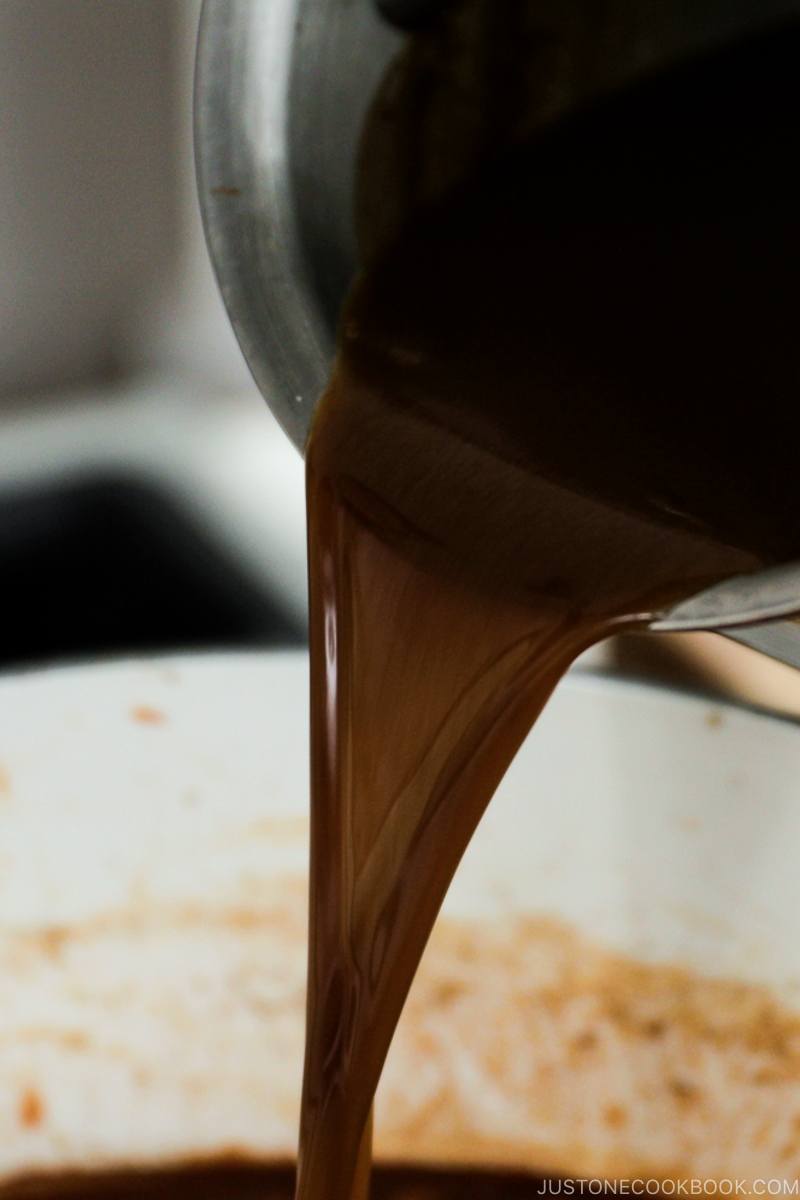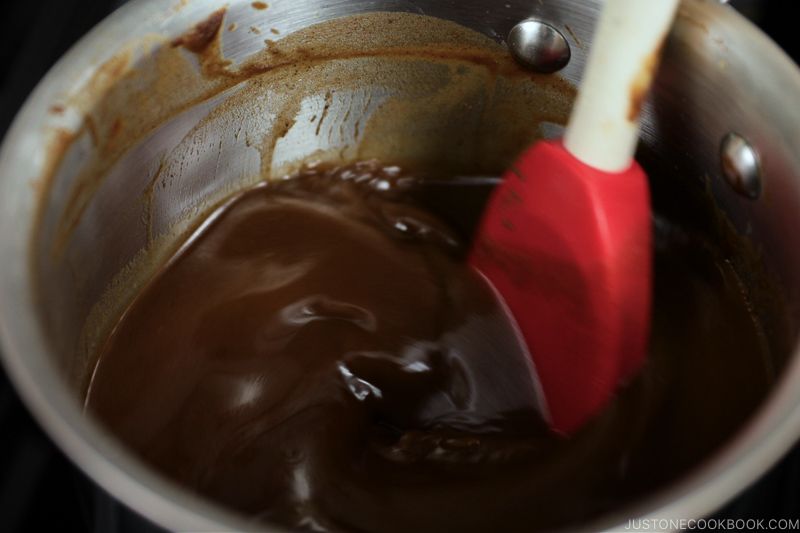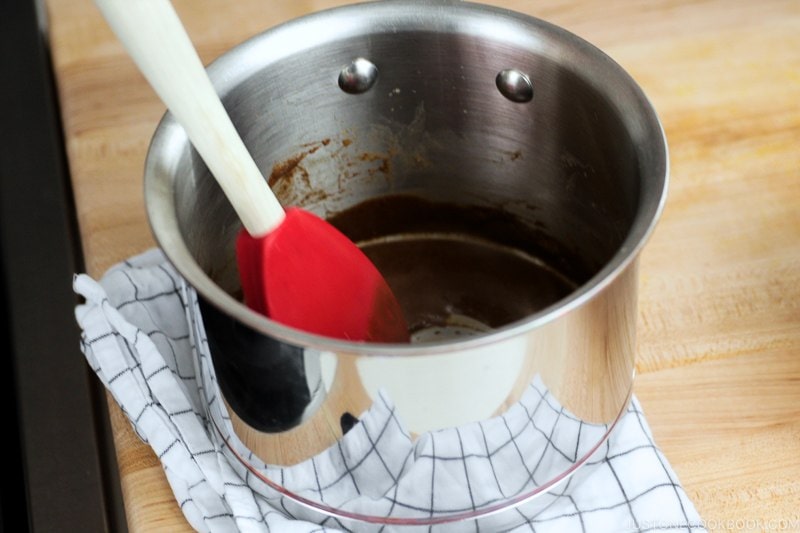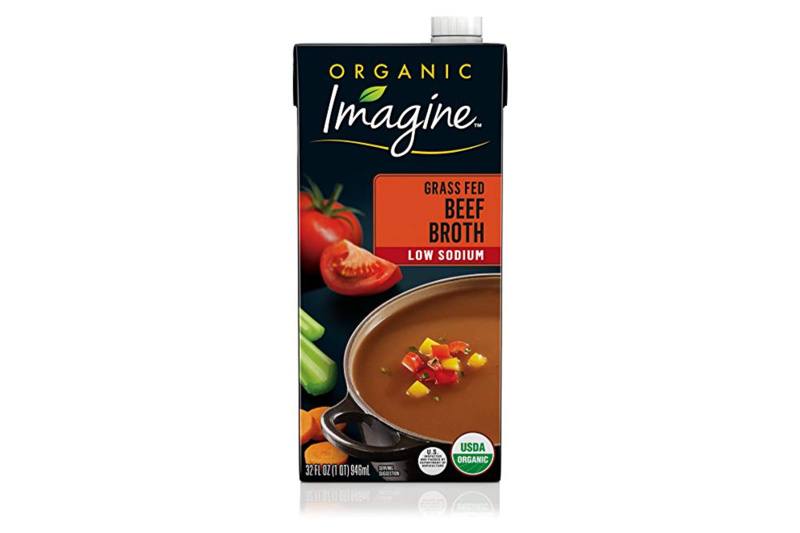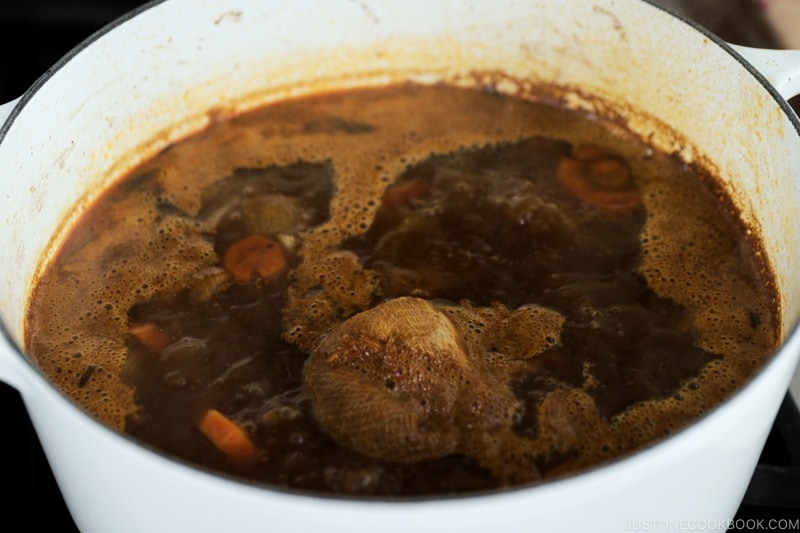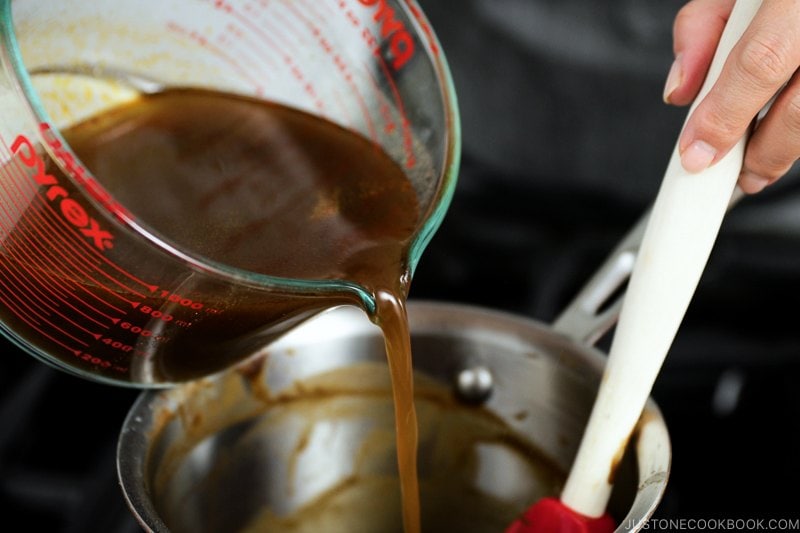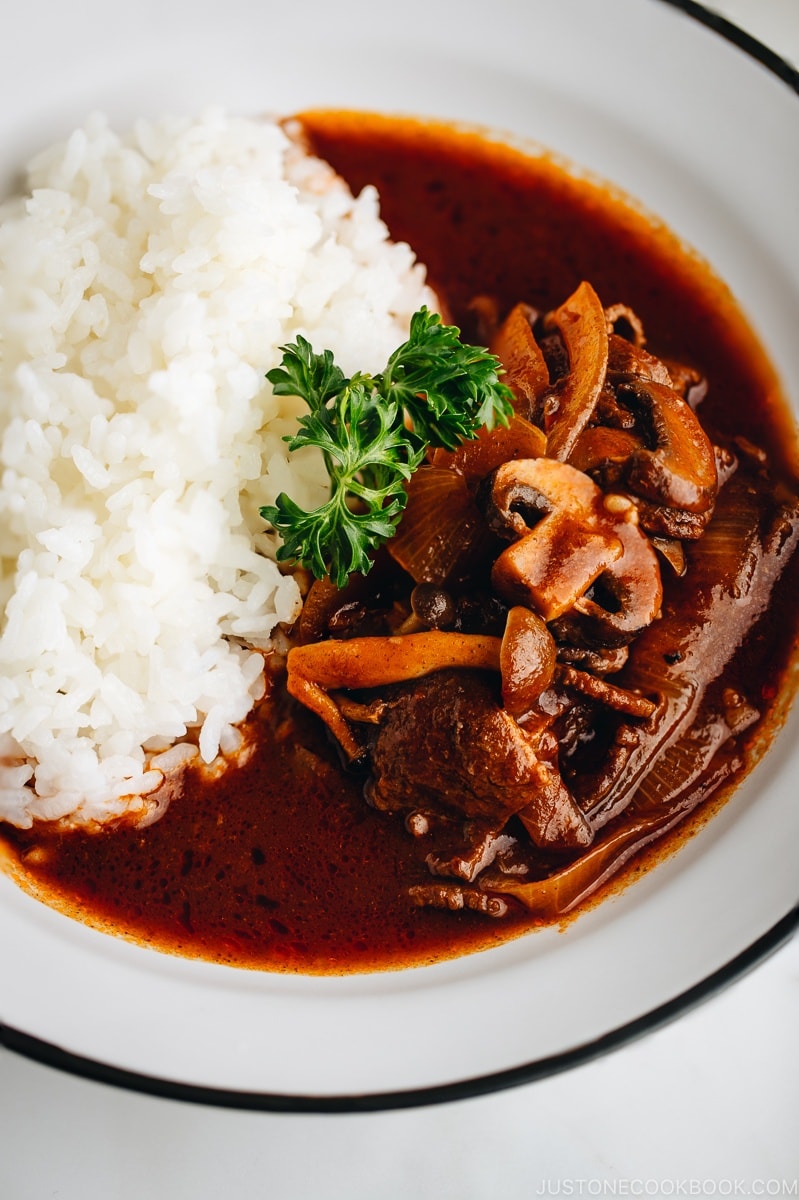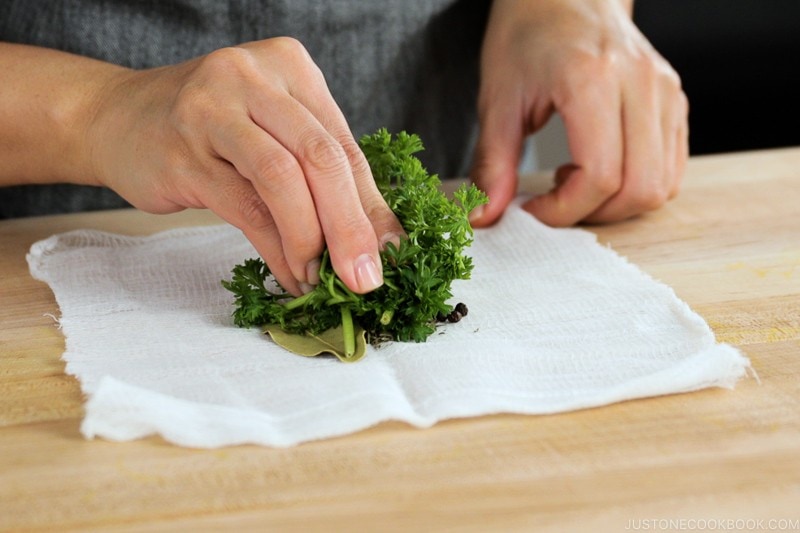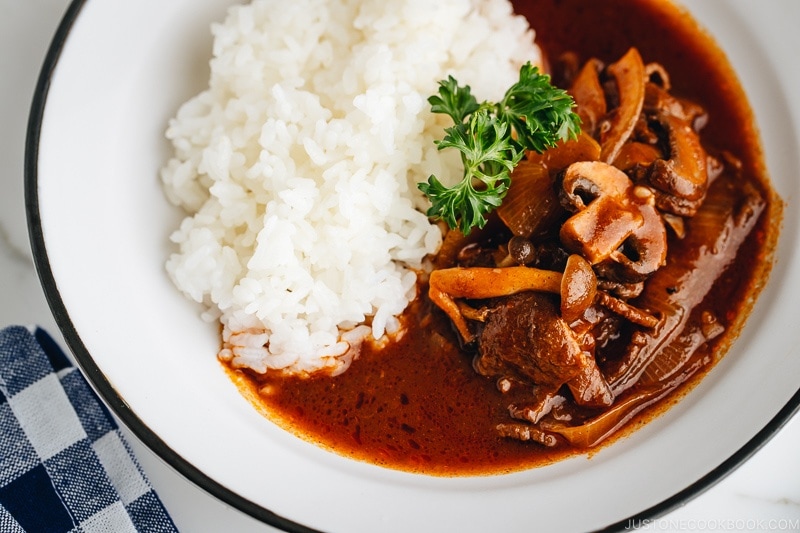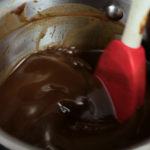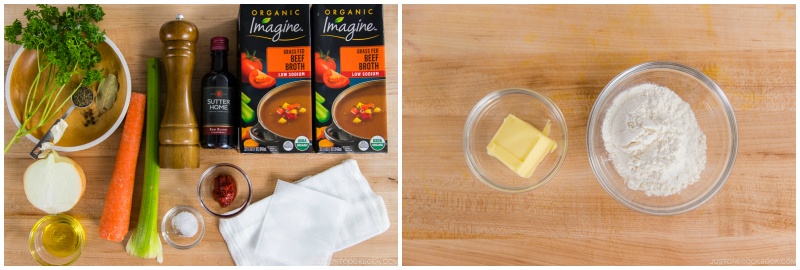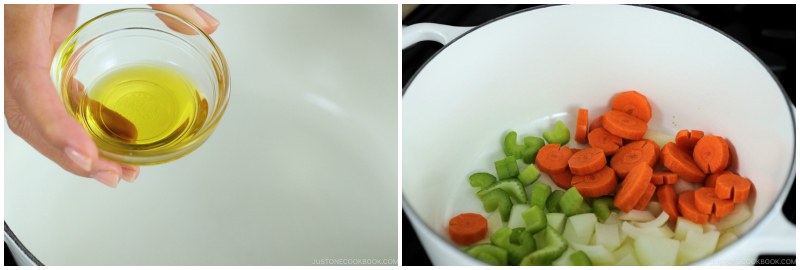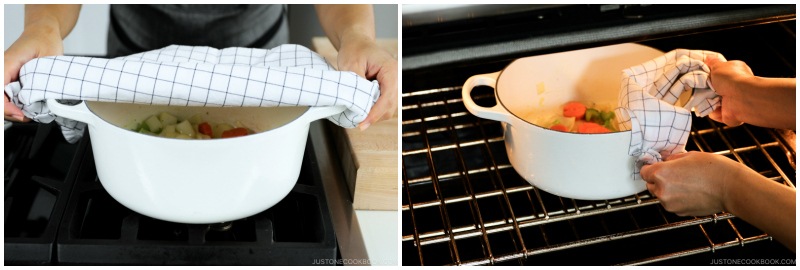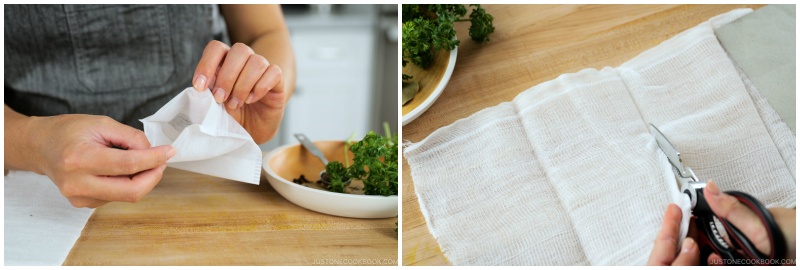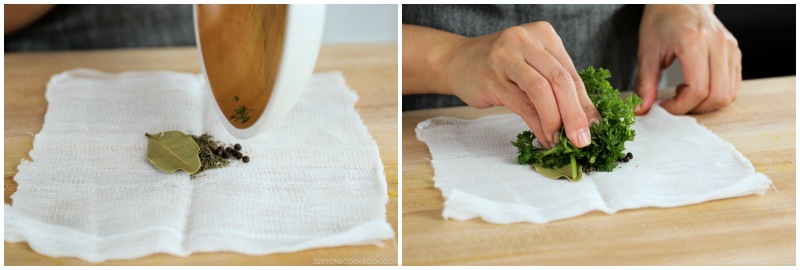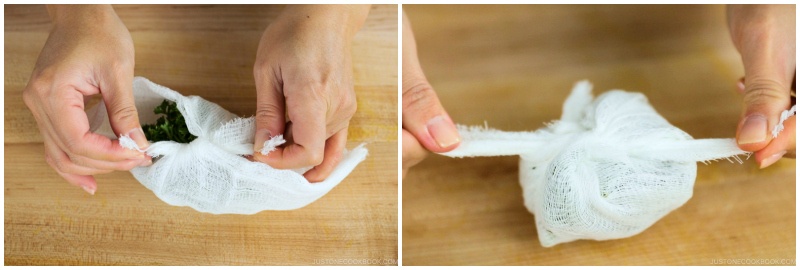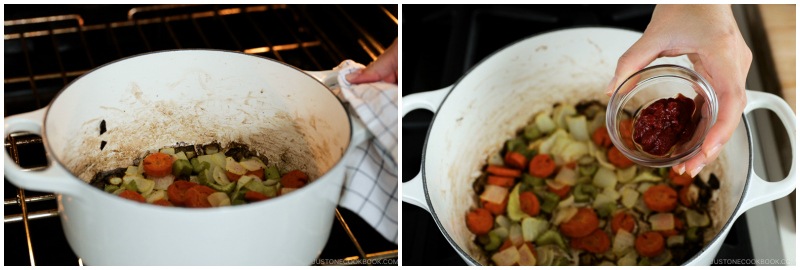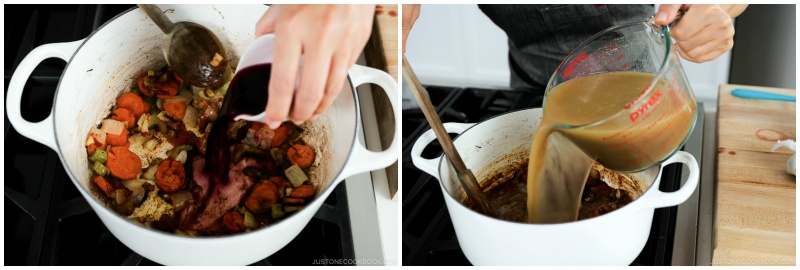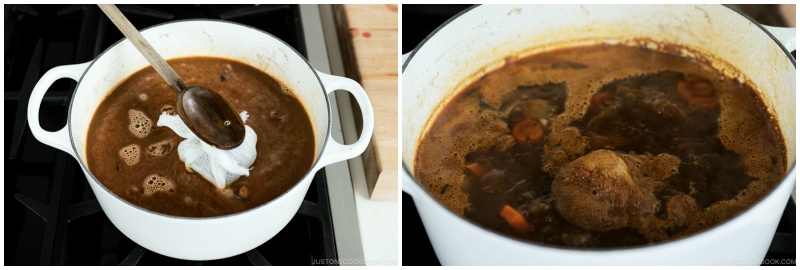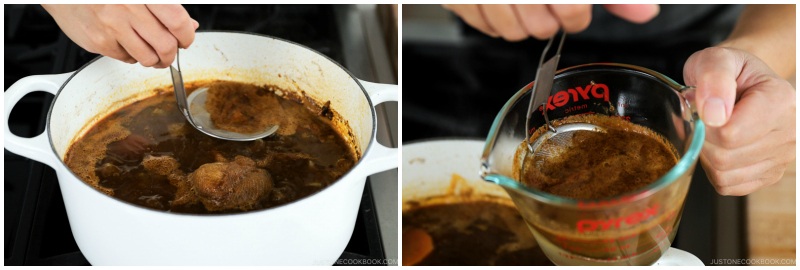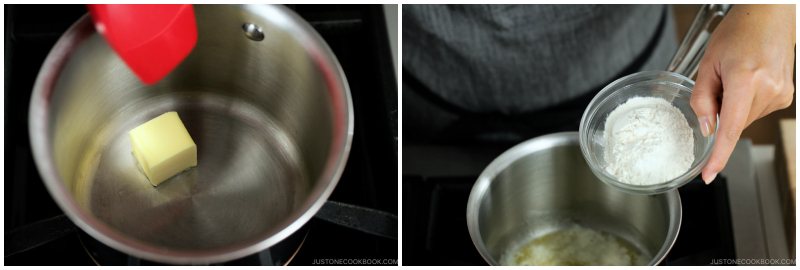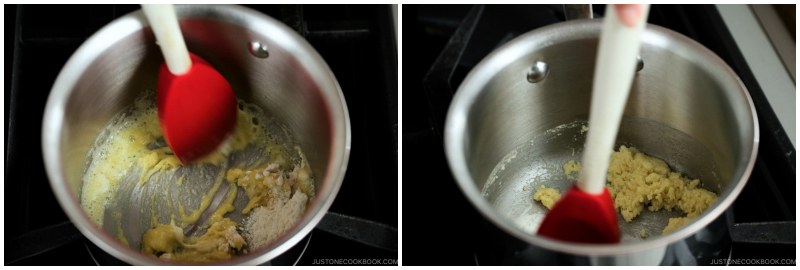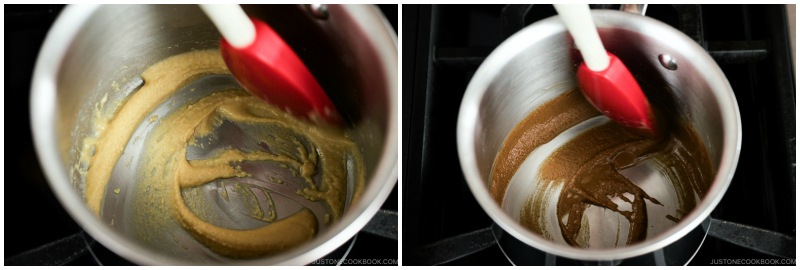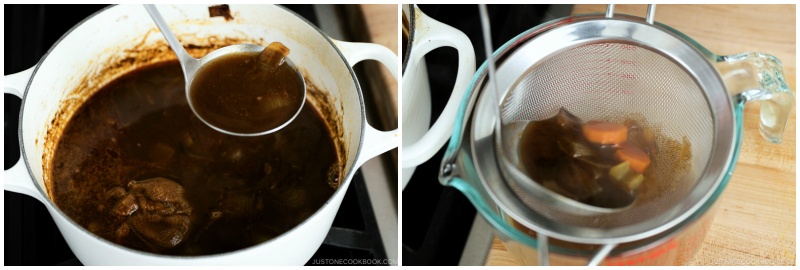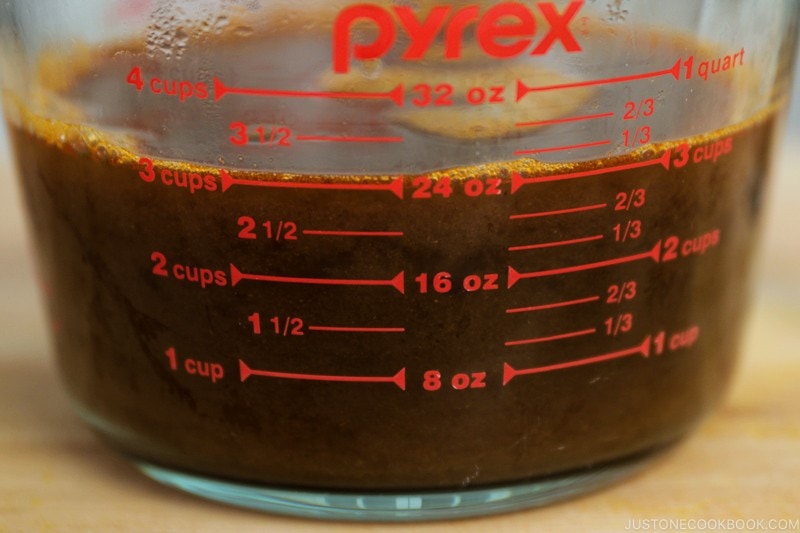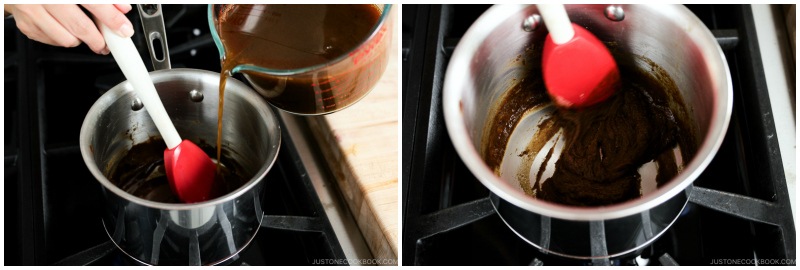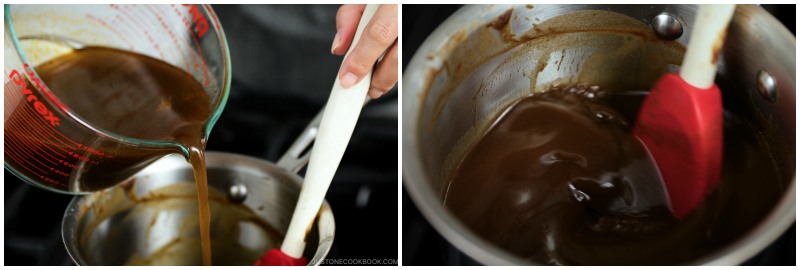Demi-glace is a rich brown sauce in French cuisine that can be used as a sauce itself or as a base for other sauces. In Japan, we use demi-glace sauce for many western-style dishes, and we can find it sold in a can or a premade jar. Since it’s not easy to find premade demi-glace sauce in the U.S., I have decided to make it at home. Making a demi-glace sauce from scratch can be a daunting process, but I’ve used store-bought beef stock to speed things up in this shortcut recipe.
What is Demi-Glace?
Demi-glace is a rich brown sauce in French cuisine, traditionally made by combining one part brown stock and one part Espagnole sauce (or sometimes called brown sauce) and slowly reducing by half. It is used as a sauce itself or as a base for other sauces. In Japan, we use demi-glace (デミグラスソース) to make popular yoshoku, western-style Japanese dishes, including Hayashi Rice, Beef Stew, and Omurice.
How Japanese-Style Demi-Glace Sauce is Made
A basic brown stock is made by roasting a lot of veal and beef bones, which can take hours and hours to simmer and reduce. To make demi-glace, you need to make a lot of brown stock so that you can keep some as it is and then use the remaining stock to make Espagnole sauce. Espagnole sauce is a classic brown sauce, typically made from the brown stock, mirepoix (onion, celery, and carrot) and tomato paste, and thickened with roux. Finally, when you combine brown stock and Espagnole sauce, you get demi-glace! Sounds complicated? Check out my so-called “Shortcut” Demi-Glace recipe below.
4 Easy Steps to Make Shortcut Demi-Glace Sauce
Step 1: Use Store-Bought Stock
This shortcut demi-glace sauce uses store-bought beef stock (not sponsored) which cut down on the cooking time immediately. If you have some quality bones on hands and don’t mind spending the time, you can, of course, make your veal or beef stock for a richer and flavorful result. Otherwise, store-bought stock would do the trick.
Step 2: Make Shortcut Espagnole Sauce
To add more flavor to the sauce, I like roasting mirepoix (onion, celery, and carrot) in the oven after lightly sauteing them on the stovetop. Then, combine the vegetable mixtures with tomato paste, wine, beef stock, and a bouquet garni (read below) to simmer and reduce. Be patient and cook for 1 to 1.5 hours to reduce the sauce. It’s an inactive period, so you can spend the time on other food preparation.
Step 3: Make Broun Roux
Making brown roux is an important step for the demi-glace sauce. Pay close attention so you won’t burn the roux. Be patient and continue to stir until the roux is brown, almost like a chocolate color. At this stage, the flour needs to be cooked through so the demi-glace sauce won’t taste “floury.” Once you master making the roux, you can make Japanese curry roux or bechamel sauce (white sauce) to make Cream Stew from scratch.
Step 4: Combine Espagnole Sauce and Brown Roux, and You’ll have Demi-Glace Sauce!
The last step is easy. Just combine the Espagnole sauce and brown roux together. Now your Shortcut Demi-Glace is done, and ready for many different uses. One of my favorites is to use the demi-glace sauce to make Hayashi Rice, or sometimes called Hashed Beef, which is a popular Western-style stew made with tender beef, onions, mushrooms.
What is Bouquet Garni (ブーケガルニ)?
It’s a fancy French word for a bunch of herbs, typically encased in a cheesecloth bag or tied together with string. It’s used for flavoring a stew, soup, or stock. The choice of herbs is up to you. For this recipe, I used the following herbs, but you can choose your own.
bay leaf parsley peppercorn thyme
Fresh vs. Dried: Because dried herbs are generally more potent and concentrated than fresh herbs, you will need a lesser amount. The general rule is 3 to 1 or three parts fresh to one part dried (1 Tbsp = 3 tsp).
1 tablespoon fresh herbs = 1 teaspoon dried herbs
Wish to learn more about Japanese cooking? Sign up for our free newsletter to receive cooking tips & recipe updates! And stay in touch with me on Facebook, Pinterest, YouTube, and Instagram.
